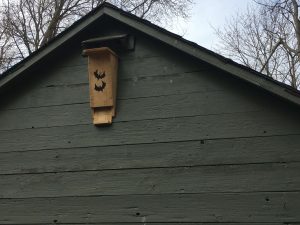 Bats are remarkable creatures. They’re the only flying mammals in the world, and they use echolocation to catch flying insects on the wing in the dark. Imagine looking for your food with your ears…
Bats are remarkable creatures. They’re the only flying mammals in the world, and they use echolocation to catch flying insects on the wing in the dark. Imagine looking for your food with your ears…
There are 8 bat species in Ontario, 4 of which are listed as Endangered on Ontario’s Species At Risk (SARO) List.
So who cares? Bats carry rabies, right? And they get tangled in your hair, right?
Well… yes, and no. Bats can carry rabies, but only 29 bats were confirmed to be carrying it in 2016. Plus, the likelihood of a human encounter with a rabid bat is reduced by the fact that they’re active while most of us are asleep. The hair myth seems to flow from their behaviour of dropping downwards from hanging upside down when leaving their roosts to fly away.
What’s amazing about bats is that they eat their own body weight in insects every night, which equates to 1,000s of mosquitoes! So, supporting bats in your yard means fewer mosquito bites and a reduced risk of mosquito-borne diseases like the West Nile virus. Bats also eat moths and other flying insects that eat crops and save the North American agricultural industry billions of dollars in pest control.
The populations of several bat species are in severe decline because of a disease called White Nose Syndrome (WNS), a fungus that attacks them while they are hibernating. For a critter to hibernate all winter, it’s essential that it minimizes its energy consumption. WNS wakes hibernating bats regularly, which drains their energy stores and causes them to starve to death.
Little Brown Myotis Bats, Big Brown Bats, and Tricolored Bats are the 3 species in Ontario that commonly use buildings to roost (sleep) and raise their young. You can support these species by setting up a bat box in your yard. Bat boxes are best hung higher up on a sunny, south-facing spot to keep the colony warm.
We carry two sizes of bat house, and you can learn more about bird, bat, butterfly and bee hes on Garden Gate Episode 10.
